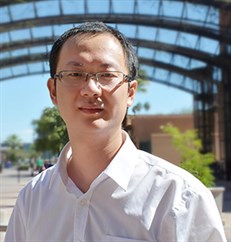 Dr. Xia Hu, assistant professor in the Department of Computer Science and Engineering at Texas A&M University, is collaborating with Arizona State University and Yahoo! to understand user behavior on social media platforms by developing novel data mining algorithms.
Dr. Xia Hu, assistant professor in the Department of Computer Science and Engineering at Texas A&M University, is collaborating with Arizona State University and Yahoo! to understand user behavior on social media platforms by developing novel data mining algorithms.
These predictions are not based solely on a user’s personal social media presence, but rather based on the interaction with their friends and their friends' opinions. This is motivated by two fundamental social theories, homophily and social influence, which state that people befriend others who are similar to them, or they become more similar to their friends over time.
Understanding and processing data produced by social media services is necessary to improve the quality of user experience, and to positively impact the overall value of the social systems going forward.
In the collaborative project with Arizona State and Yahoo!, Hu’s team at the Data Analytics at Texas A&M Lab (DATA) focuses on social spamming detection and understanding user behavior by analyzing people’s online posts and social interactions.
Social spamming occurs when unwanted spam content appears on social networks or any website with user-generated content to targeted users and it is often intended to boost a user’s social influence, legitimacy and credibility.
“Successful spammer detection in social media is important to improve the quality of user experience, and to promote the healthy use and development of a social networking system,” Hu said. “Since social media provides a platform for people to share thoughts on various events, we have done work on identifying rhetorical questions, online protest participation, advocates of political campaigns, health discussions, et cetera.”
Hu co-authored “Predicting Online Protest Participation of Social Media Users,” a paper to predict if social media debate will turn into violent protests, which was recently presented at the 2016 AAAI Conference on Artificial Intelligence (AAAI).
Brownian Motion, which notes the interaction between fluid particles in motion over time, was applied to this research. By looking at the interaction between users the team was able to employ this theory to model the probability of a user declaring protest.